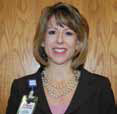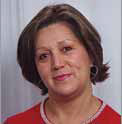Judgment Day

Time and again, research shows us that the single most important factor in improving a child’s education is the quality of his or her teacher. We all want our teachers to be as strong as they can be, which is where educator evaluation packages come in.
Room for Improvement
If your teachers need to beef up their skills, there are hundreds of PD offerings ranging from online chat sessions and courses to professional learning communities. Here are some to get your district started.
Amplify Insight: www.amplify.com/services
ASCD PD Online:www.ascd.org/professional-development.aspx
Atomic Learning: www.atomiclearning.com
blendedschools.net:blendedschools.net
Tools and ideas to transform education. Sign up below.
Coursera PD courses:www.coursera.org
Discovery Education:www.discoveryeducation.com/administrators/professional-development/index.cfm
Eduplanet21:www.eduplanet21.com
Edvation’s pd21:www.edvation.com/pd21- home
Insight Education Group:www.insighteducationgroup.com
inTASC: Model Core Teaching Standards: www.ccsso.org/documents/2011/intasc_ model_core_teaching_standards_2011.pdf
Knowledge Delivery Systems:www.kdsi.org
PBS TeacherLine:www.pbs.org/teacherline
Pearson’s myPearson Training:www.mypearsontraining.com
Powerful Learning Practice:plpnetwork.com
School Improvement Network’s PD 360:www.schoolimprovement.com
Solution Tree:www.solution-tree.com
STI – Education Data Management Solutions:www.sti-k12.com
Teachscape: www.teachscape.com
Teaching Channel Teams: www.teachingchannel.org
Tech4Learning:www.tech4learning.com
Jenny Froehle
Administrator
Zionsville (IN) Community SchoolsWhat product(s) do you use to evaluate your teachers?

“We use Standard for Success (SFS; www.standardforsuccess.com) as our evaluation software. T he rubrics and additional measures/weights it contains are based on the Indiana state model for evaluation originally known as RISE,” says Froehle.
Is evaluating for the Common Core a part of this evaluation tool?
“Part of the rubric certainly assesses whether teachers are developing units/lessons based upon standards. I ndiana is a Common Core state in transition, so part of the evaluation requires evaluators to make sure teachers are planning with the standards as their foundation.”
What training did you receive on how to interpret the data?
“Each evaluator completed a five-session training process that contained some process/procedure on how to gather, value, and interpret data from observations,” says Froehle. “We followed this with a two-day administrative retreat largely focused on data collection and actionable feedback as well as clarification of district evaluation procedures and use of the SFS tool. We also did monthly inter-rater reliability practice as a team of 22 evaluators that involved viewing video or scripts from SFS and practicing how we would code them, analyzing aggregated data from observations completed in our district, and discussing conclusions we could draw from them.”
What do you like about this evaluation tool?
Froehle likes that SFS is easy to use, tailored to her needs, and extremely transparent to teachers, which helped alleviate anxiety throughout the process. “The SFS tool allowed us to manage volumes of data with ease, which was critical in a district with few central office staff. Staff members can set and track goals for student learning data within the tool, and evaluators can approve those goals and assign final ratings for them at the end of the year. Finally, the tool allows us to manage all this data easily and produce simple reports and updates that help us analyze our results and process.”
What features would you like to see added?
“I’d like to see a standard tool for recording post-observation conferences coded to the rubric, the ability to add/scroll an artifact and code it, and would like to have a one-button feature that would print a staff member’s entire file—including observation scripts/codes/comments, SLO data, and all artifacts in case of a need for printed materials. I t would be great if we had the capability to video a class segment using the iPad and insert audio commentary or scripted feedback/codes embedded into the video. Whenever I have seen a need for an enhancement, I have written to suggest it, and typically—if it is doable—I’ll see that enhancement within days to weeks.” [Editor’s note: The latest version lets users add/scroll an artifact and enter their own PD. The summary page shows current and past numbers and a new finalization report has been added.]
What PD do you offer to support teachers after their evaluations to help them strengthen any areas of weakness ?
“We know from research that whole-group PD is ineffective and produces short-lived, if any, effects. Thus, we connect teachers to colleagues for help with a skill/need, for observation, or for small-group meetings to study a book or professional resource. We send links to webinars, video clip libraries, or Twitter/Pinterest resources and have infused PD efforts into staff meetings, PLC meetings, and district PD days. Our PD offerings have been as diverse and unique as the individuals needing them.”
Any tips on making this evaluation process less stressful for your teachers?
“Early on, we adopted the motto ‘Just do what you do’ to help teachers relax about observers in their classroom. While this didn’t help everyone, I think it communicated that we know they are doing a good job and this process isn’t meant to cause alarm. I think the choice of a good software tool that is transparent and easy to use can make the process far less stressful. There was nothing secretive about this process; all the data was visible and teachers had the opportunity to upload artifacts to their own account if they felt something was missed. We know that when you work with kids and are out there taking the kinds of risks you should in your practice that not everything will be rubric-perfect. This wasn’t always enough to keep folks from feeling anxious or defensive, but it went a long way to helping people understand we respect and honor what they do.”
Carla Holloway
Director of teacher & leader effectiveness
Memphis (TN) City Schools*
*This information is for Memphis City Schools and is about the district before it merged with Shelby County School District in July 2013.What product(s) do you use to evaluate your teachers?

The district developed a Teacher Effectiveness Measure that consists of five weighted components, with classroom observation accounting for 40 percent of the evaluation. The district used Insight Education Group (www.insighteducationgroup.com) to help develop the observation instrument, which is loaded into a RANDA system.
Is evaluating for the Common Core a part of this evaluation tool?
“We had the Common Core shift added to the observation rubric for the 2012-13 school year,” says Holloway. “Insight helped us incorporate the Common Core within the indicators and descriptors.”
What training did you receive on how to interpret the data?
Insight provided training for the district’s observers on evidence gathering and rating teachers via a “train-the- trainer” model. Each school trained a team of four or five administrators and teacher leaders over the summer and then they shared their expertise with their colleagues before the evaluation period began.
What do you like about this evaluation tool?
“Our observation rubric contains indicators of effective instructional practice, and the descriptors are very behavioral,” says Holloway. “Everything is so explicit, a third grader could say, ‘This is what my teacher is supposed to be doing and what I am supposed to be doing.’ For learning to occur, both teachers and students must be active in the learning. I love that our instrument brings that to life.”
What features would you like to see added?
Holloway would like to see the Plan and Reflect/Adjust domains become a part of the observation process. “It all goes together—planning, cultivating, teaching, and reflecting/adjusting. If the teacher does not plan lessons that are aligned with the Common Core, she cannot effectively execute the lessons. I’d like to see planning observed during the year so teachers can be rated on how well they plan. That’ll take us a long way.”
What PD do you offer to support teachers after their evaluations to help them strengthen any areas of weakness ?
After the first observation of the year, every teacher— regardless of performance level—develops a professional growth plan with her principal that identifies PD opportunities for the teacher to do before the next observation. These include observing a colleague, working with a coach, watching videos, etc. Holloway says they have many opportunities to reflect on their practice.
Any tips on making this evaluation process less stressful for your teachers?
“Be as transparent as you can. Offer as much training as possible and involve the teachers—not only in developing the rubric—by asking what they need. Our teachers see ratings for all components of the evaluation as they are populated in the electronic system. Nothing is hidden from them; they know where they stand and where they need to improve.”
Kim Saum-Mills
Director of staff development & instructional improvement
Millard (NE) Public SchoolsWhat product(s) do you use to evaluate your teachers?

“We use our own evaluation process and deliver it with Netchemia’s TalentEd Perform (www.netchemia.com/talented-perform),” says Saum-Mills.
Is evaluating for the Common Core a part of this evaluation tool?
No.
What training did you receive on how to interpret the data?
Saum-Mills says they are just beginning to explore this part of the product.
What do you like about this evaluation tool?
“We like how we could customize our own evaluation process and forms and not have to purchase a packaged product. We also appreciate the customer service we receive from Netchemia.”
What features would you like to see added?
“For the TalentEd Perform piece, we would like Netchemia to add a document library so we can pull together our evaluation resources and video clips into one area for our staff.”
What PD do you offer to support teachers after their evaluations to help them strengthen any areas of weakness ?
“Our Millard Instructional Model is the foundation of our PD support for our staff. All new staff members participate in a Millard Instructional Model workshop and all of our subsequent PD is aligned to the Instructional Model. Each supervisor evaluates according to the Model and then offers a variety of support that is differentiated based on the teacher’s need. We have begun using instructional-coaching in a few schools and hope to roll it out district wide in future years.”
Any tips on making this evaluation process less stressful for your teachers?
“I think each evaluator sets the tone of evaluation. The purposes of our Millard staff evaluations are to ensure that all students learn the academic and life skills necessary for responsible living and that Practices That Promote Successful Student Learning continue in the classroom, to foster the continuous improvement of teaching and learning by teachers, and to promote the integration of site based plans and the district strategic plan with instructional improvement through staff development. We have spent a great deal of time the last few years in professionally developing our administrators/supervisors so they can be better equipped to help their teachers grow.”
Andrew Levine
Director of instructional technology & communication
Nutley (NJ) Public SchoolsWhat product(s) do you use to evaluate your teachers?

“We use the Danielson 2007 Framework with Performance Matters’s FAST e Observer (www.performancematters.com) to manage and write up observation reports and annuals,” says Levine. “Nutley encourages teachers to reflect throughout the entire year on their performance and how it meets the two established district goals, two building goals created by the local PD committee in each school, and two personal goals derived from the framework.”
Is evaluating for the Common Core a part of this evaluation tool?
“While we are not specifically evaluating for Common Core at this time, we are using the Danielson evaluation framework specifically as a tool for professional growth.”
What training did you receive on how to interpret the data?
“As a district, we introduced the Danielson Framework two years ago and we are constantly working to improve the evaluation process, which in turn will help instruction, professional practice, and student achievement.”
What do you like about this evaluation tool?
“We have been working with Performance Matters and its FAST e Observer tool throughout the year. Performance Matters works very closely with us. They are attentive to our needs and use the feedback to enhance their product platform. We are continuously in contact with them, providing input into making their tools better, and they are very responsive.”
What features would you like to see added?
“The ability to upload documents, videos, pictures, and sound files as artifacts as evidence, and we just heard from Performance Matters that the back-to-school release will include these.”
What PD do you offer to support teachers after their evaluations to help them strengthen any areas of weakness ?
“Moving forward, PD will be dependent upon the district, building, and personal goals set forth from the prior year’s annual summary. We plan to provide a repository of training resources on our district and school sites as well as offer training, as needed, depending upon demand.”
Any tips on making this evaluation process less stressful for your teachers?
“Teachers must familiarize themselves with and understand their framework early on. As the framework is a rubric, the expectations and language for what it takes to be a distinguished teacher are right there and should be referred to often. Teachers should be able to provide evidence and specific examples to support their performance. Districts should use the framework as a tool for professional growth and not as a ‘gotcha.’ Districts should involve teachers and administrators in the process early on to ensure buy-in and to roll it out effectively. Open communication with teachers throughout the process is also very important.”
Laura Morana
Superintendent
Red Bank (NJ) Borough Public SchoolsWhat product(s) do you use to evaluate your teachers?

Teachscape Reflect (www.teachscape.com), an online observation and management system, which incorporates Charlotte Danielson’s Framework for Teaching.
Is evaluating for the Common Core a part of this evaluation tool?
“Charlotte Danielson’s Framework for Teaching incorporates language related to the Common Core,” says Morana. “Our curriculum guides are also based on the Common Core. The guides lead the lesson-planning process, which is used to evaluate the level of teacher performance under domain #1 of the Framework.”
What training did you receive on how to interpret the data?
“District administrators participated in an online course through Harvard University’s continuing education program. Administrators also completed online training on how to use the Framework for Teaching through Teachscape Focus. Once proficient, observers conducted a series of five informal teacher observations and two formal teacher evaluations over the year using Teachscape Reflect.”
What do you like about this evaluation tool?
“The tool provides the necessary structure to engage teachers in a meaningful conversation that has at its core the improvement of student learning and the practice of teaching.”
What features would you like to see added?
None, says Morana.
What PD do you offer to support teachers after their evaluations to help them strengthen any areas of weakness ?
“PD is individualized through a peer-coaching and/or master teacher model, administrator monitoring of progress, online resources, or outside PD sessions.”
Any tips on making this evaluation process less stressful for your teachers?
“Defining expectations for teaching and learning and how the evaluation system will be implemented is key! Written guidelines or protocols will support this process.”
Other Teacher Evaluation Packages
observe4success: www.observe4success.com • Pearson Teacher Compass Suite:www.pearsonschool.com
